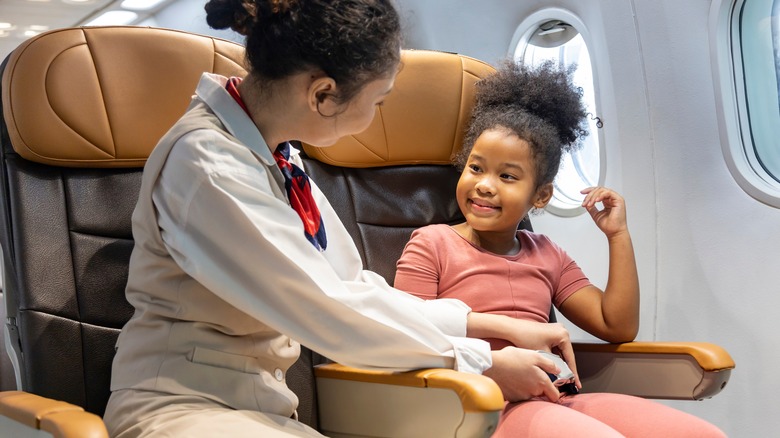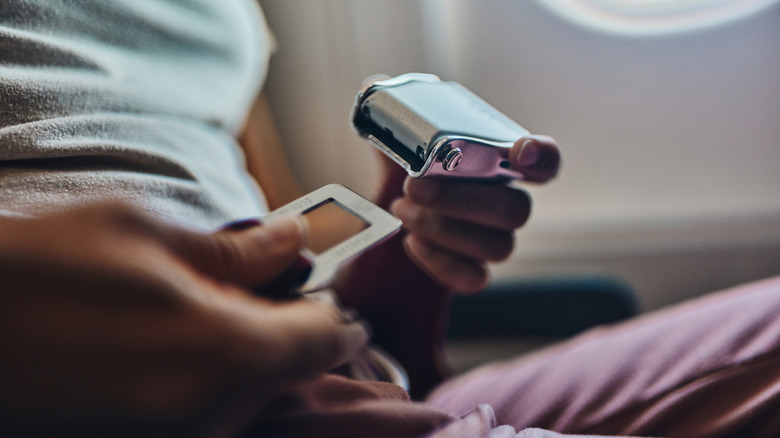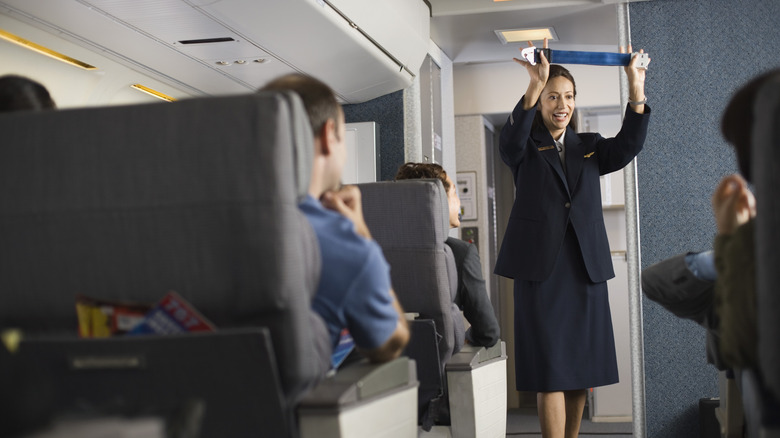The One Spot In Your Airplane Seat You Are Forgetting To Sanitize
There are nicer ways to say it, but here is the truth: Planes are dirty. With quick turnarounds between flights and constantly fluctuating staff, there is often little time to deep clean a plane. You may have noticed people bringing antibacterial wipes to clean off their seats, the pockets in front of them, the tray tables, and the armrests. Perhaps you do this yourself. It's a good idea, considering that you're about to spend hours in a metal tube that you cannot leave. There is one spot, however, that you might be missing.
A 2004 study in the Journal of Environmental Health Research (via Time) said that plane travelers are up to 113 times more likely to catch a common cold on a plane. There are many reasons for this, including lower humidity in the cabin, which can affect the mucus membranes in our noses, eyes, and mouths. Anything you can wipe down for yourself is helpful, and that includes this oft-missed spot — the seat belt strap and buckle.
By the numbers
If you fly frequently, you might be wiping things down on planes (and in hotels). You're probably hitting the obvious areas first, like the tray table and the touch screen. The seatbelt may be last, if you clean it at all. However, your seatbelt is definitely something you should clean, as we all have to touch it at least twice per flight.
But where does a seatbelt rank in dirtiness? A 2015 CNN Travel article mentioned a TravelMath study where they tested how many colony-forming units (CFUs) were found per square inch. The tray table was the worst, with 2,155 CFU/sq. in., followed by drinking fountains, overhead air vents, and bathroom flush buttons. Finally, we have seatbelt buckles with 230 CFU/sq.in. Sure, that number is lower than the tray table, but you're still probably opening and closing it fairly frequently if you're getting up to move around or use the restroom. It's worth cleaning.
Today wrote about an Auburn University study that tested used Delta Airline parts (Delta was part of the study's funding along with the Federal Aviation Administration), where results were presented at the American Society for Microbiology's 2014 annual meeting. The study showed that the MRSA bacteria (methicillin-resistant Staphylococcus aureus) they put on these surfaces survived for a full week on the cloth pockets on the back of airplane seats — and E. coli O157 lasted for 96 hours. (Seatbelt straps are made of cloth as well, so keep that in mind.)
Wiping it down
It all sounds pretty gross, right? It's worth a few extra minutes to clean this stuff. It's also a good time to remember to wash your hands frequently and keep your hands away from your eyes, nose, and mouth. If you can avoid putting things in the seat back pockets, you should. You can generally bring antibacterial wipes on the plane; though if you're using a liquid spray or gel, make sure you keep it under 3 ounces and put it in a clear liquids bag when going through security. You may also be able to get disinfectant from a flight attendant, as some airlines keep these on board.
You should wipe both sides of the buckle as well as the strap. Your seatbelt is important enough that a flight attendant shows you how to use it on every flight. You are required by law to wear one on the plane, so you can't avoid touching it. A couple of extra seconds to wipe it down are worth it.


